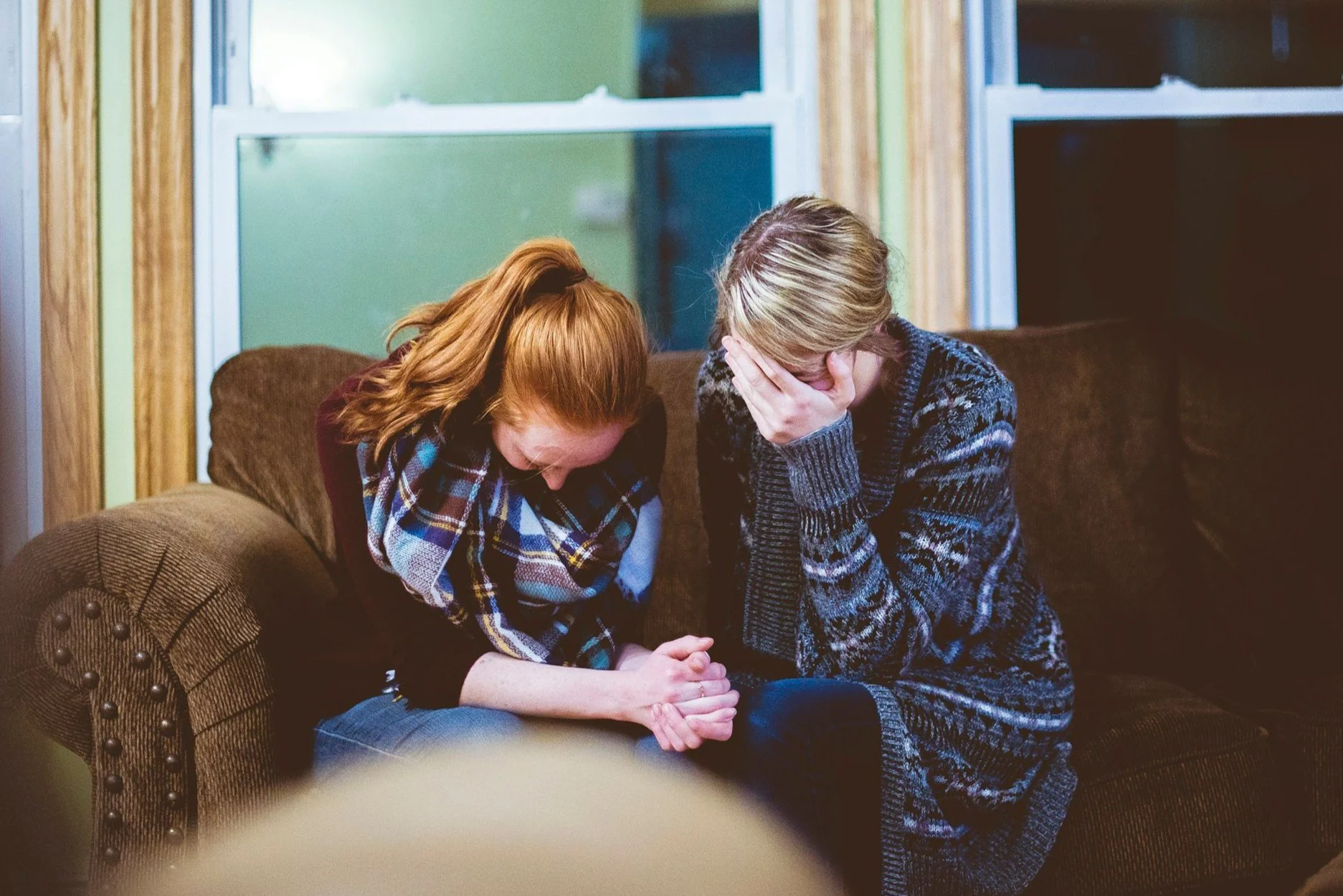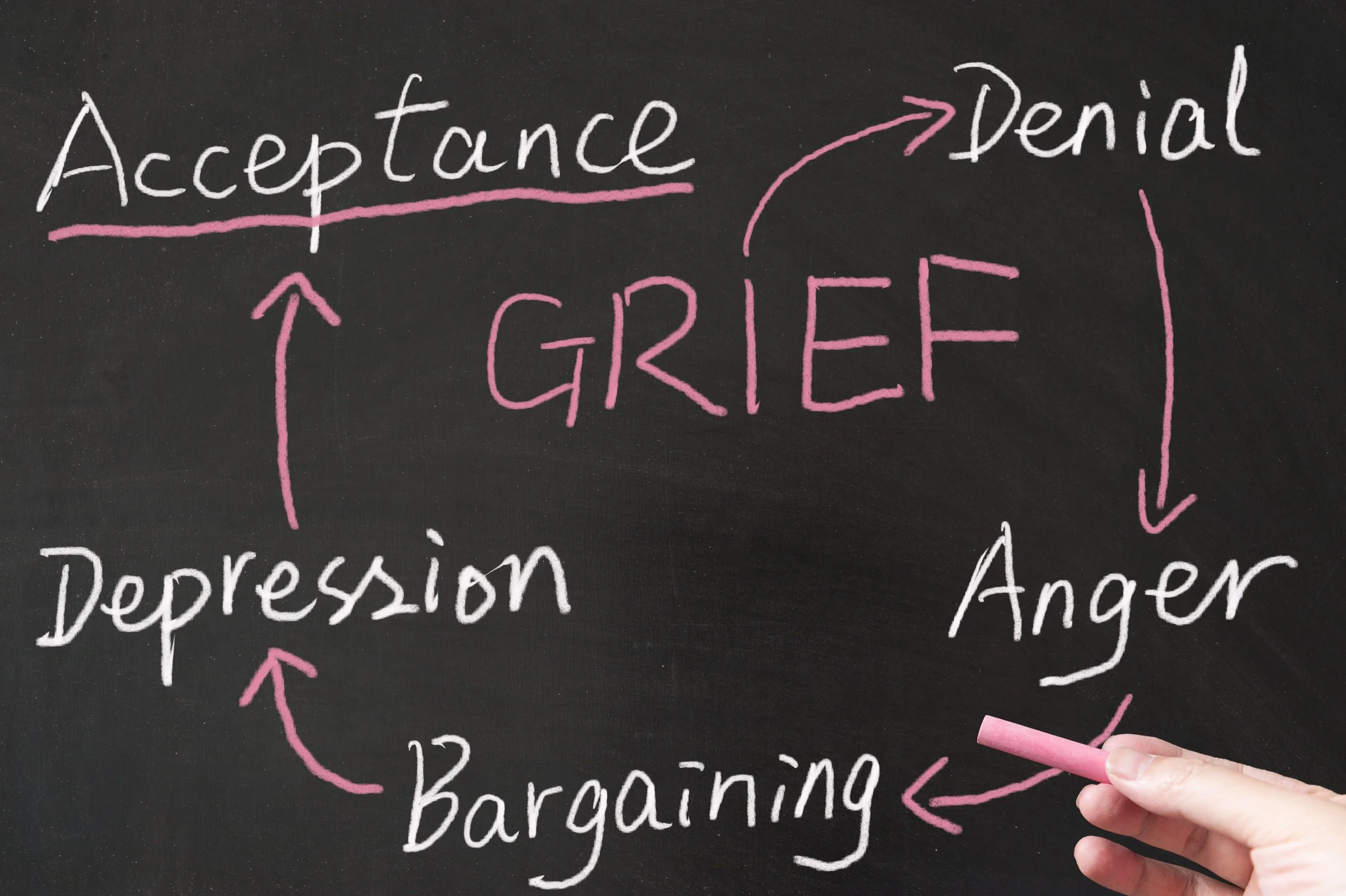Understanding grief – A compassionate guide to different types of grief & How to heal
“Grief is like the ocean; it comes in waves, ebbing and flowing. Sometimes the water is calm, and sometimes it is overwhelming. All we can do is learn to swim” – Vicki Harrison
Grief is arguably the most complex and painful emotion a human can experience, and because grief manifests in many different ways, it’s also one of the most misunderstood. From losing loved ones to mourning the loss of a relationship or our childhood, grief is always a tough topic… so let’s explore it gently together.
What is grief?
At the most basic level, grief is the natural, anguish-ridden response we feel when a loss occurs, and a ‘loss’ is when something we love or wanted is taken away. When we move beyond the basics, we see that grief is love with nowhere to go, and perhaps this is why grief has such a strong tendency to overwhelm us. It can storm the castle, spread like wildfire, and invade every corner of our personal kingdom at any point.
While grief can feel invasive, grief is not the enemy. Grief, in many ways, is the best most loving part of us – the part that’s desperately, relentlessly searching anywhere and everywhere for the thing or the one we lost.
Types of grief
There are many types of grief, however most can be categorized into five different types:
1.) Anticipatory grief
Often described as grief before death, anticipatory grief refers to the emotional grief or deep loss felt before the loss actually happens, such as when the initial diagnosis of a life-threatening illness is received, or there is an expectation that a loss-related change is impending.
2. Symbolic grief
Sometimes a painful loss does not involve an actual death, but it carries deep, symbolic meaning that can feel like a death. When a dream shatters, when life alters drastically, when a significant relationship comes to an end, or your personal identity shifts, the grief can be profoundly painful.
3. Disenfranchised grief
Grief is considered disenfranchised when the loss is not recognized by others as significant or socially appropriate. (IE: Loss of a convicted or incarcerated loved one, a pet, an extramarital affair, a pregnancy, a job, or when the griever may not be seen as ‘old enough’ to be grieving.) Disenfranchised grief can be especially painful, because people experiencing it often feel or are treated as if their grief is not valid or worthy of comfort.
4. Ambiguous grief
Grief is ambiguous when a loss is uncertain, lacks finality and closure, or when there is no clear, defined loss (such as with death). Ambiguous loss can occur when a loved one is physically present or alive but psychologically absent, such as with dementia, estrangement, substance abuse, mental illness, missing person cases, divorce, or incarceration.
Read more: Finding calm in the storm – 5 Ways to cope with uncertainty
5. Complicated grief
Complex grief – sometimes called Prolonged Grief Disorder (PGD) – is when the grief is unusually intense, persistent, and debilitating. When grief symptoms persist and worsen over the course of six months to the point that daily functioning is inhibited, then the grief can become stuck and is considered complicated.
How does grief work?
Grief often works in stages: denial, anger, bargaining, depression, and acceptance. However, enough blogs and books have already been written on these five stages of grief. The only thing I want to mention here is that the stages of grief are not linear, and they move on their own timelines. One minute you may experience denial. The next minute, depression. The next day, acceptance. The next hour, anger and bargaining.
The ebb and flow of the stages of grief is why we say that grief comes in waves. But as time goes by, grief becomes more like a ball in a box with a pain button on one side. When your grief first begins, the ball is massive, and that pain button is constantly getting hit.
As you start to process the grief, the ball starts to shrink, and the pain button may not get hit as often… but it’s still there. No matter how much time has passed or how big or small the ball is, grief returns at unexpected times, and something can happen to cause the ball to bump into the pain button again.
Myths about grief
There are three common myths about grief I want to permanently dispel.
The process of healing from grief is linear.
No, it is anything but linear. You’re allowed to be ok and full of acceptance one moment and then ‘not ok’ the next.
You should ‘just get over it’ or ‘move on’ after a certain amount of time.
Nope. The grieving process is a deeply personal one, and it is never okay or even possible for our grief or healing timeliness to be determined by others.
Read more: A message of hope for those in the messy middle of transformationGrief is only for when someone dies.
This is not true at all. Death elicits perhaps the most severe form of grief, however, grief is not limited to the loss of a loved one. Grief can apply to any significant loss.
The impact of grief – how grief affects us
Grief exists on a multi-dimensional spectrum that includes shocked, numb, and everything in-between. Regardless of grief type, grief symptoms can significantly impact our well-being in the following areas:
Physically – Grief impacts our hormones, cognitive functioning abilities, sleep, etc.
Socially – Grief can cause intense feelings of isolation and compel is to withdraw from other relationships as an act of self-preservation.
Emotionally – Grief wreaks havoc on our emotional sense of well-being.
Mentally – Grief can literally rewire your brain, cause brain fog, and in some cases, lead to memory difficulty.
Spiritually – Grief can spiral us into an existential crisis.
Read more: Practicing self-love – 30 Meaningful ways to care for yourself
How to create a safe space for grief
Allow grief to be there.
As gut-wrenching as grief is, grief is a part of the universal human experience. It’s only when we stop trying to shove grief away and choose instead to accept it that grief becomes something we can manage and honor.
Find ways to honor losses.
Some people may feel guilty for experiencing any type of joy following a loss. But the truth is that smiles can be just as honoring as tears. Tears are precious proof that we did care, and we still do care. And friend, that does not need to ever change. All I’m suggesting is that whenever we feel ready, it’s worth exploring ways to develop a healthy relationship with our grief and make room for everything – smiles, laughter, tears, and moments of silence.
3. Share it – don’t keep it inside.
A burden shared is half the weight. If grief is inside of you, you need to let it out and process it. Sometimes, connecting with friends and family can help you cope with grief, but for some, that’s not an ideal solution. For many reasons, having a grounded relationship with a grief-informed counselor where the focus is 100% on you can make a huge difference as you release and process through your grief.
As a licensed counselor, coach, and human who is intimately acquainted with the waves of grief, I offer my clients a safe and supported space to process grief with compassion and dignity. If you’d like to learn more about my approach to mental well-being and grief support, please contact me. Whenever you’re ready to ‘do the work,’ I’m here for you.
Let’s Connect
Hi there! I’m Jenny, a licensed Holistic Therapist (LISW-CP) and Certified Adult Chair® Master Coach.
I combine both therapy and coaching methodologies to provide my clients with a holistic perspective and the techniques they need to flourish. Rediscovering who you were always meant to be is an act of courage, and radical self-love can turn unconscious paralysis into conscious, authentic growth. Learn more about me here.




